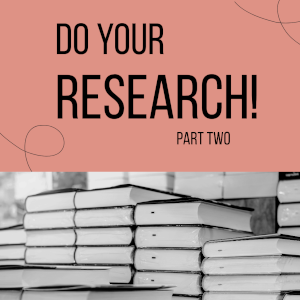
In Part One of this series, because who knows, I may do more, I discussed readers tend to catch, very easily, when an author doesn’t do research. In some cases, it can be jarring and takes away from the story. And honestly? It’s lazy ass writing.
Since I am a librarian by training (and career path), I thought it might be a good idea to list places you can research online without leaving your house.
- Local library offers online databases and reference guides. Best part? It’s all free! Here is a link to the services one of my libraries offers:
- ebooks
- Local history database
- Databases galore for topics such as academic articles, health and medicine, biographies, encyclopedias, legal resources, history, languages, genealogy, and so much more
- Streaming music and movies
- Online newspapers for your area
- Search for “city +newspapers” (sans quotes)
- Newspapers.com has over 25,000 newspapers from around the world stretching back into the early 19th century. (There is a fee, of course, but it’s not terrible.)
- Use Google maps and Street View to get to know the area and help build your own
- Responsibly use Wikipedia
- Wikipedia has come a long way on being factual in that a list of legit sources is now a typical component of an article rather than Vanguard66 just writing the article.
- JSTOR provides access, for free (but there is a paid option), to over 12 million items such as books, journals, and articles across 75 disciplines. Great if you’re doing academic research.
- Ancestry.com for your genealogical needs
- Interlibrary loan (links to Michigan state ILL) can be tricky to find but it is available via your local and academic libraries. How does it work? You go to your home library and request a title they do not own and they will find it for you at a participating library. The book is then shipped to your home library and you get to check it out for 14 or 21 days or whatever. Once you’re done, you drop it off at your local library. MEL, for Michigan, is awesome because it is a separate website that allows you to login with your home library credentials, search for books and media like DVDs and CDs, and check them out and boom! Delivered to your home library to pick up. The ship time can be as little as a week or in Kentucky, as long as six weeks. Depends on where the book is coming from. You typically cannot check out ebooks.
- WorldCat If you want to see which libraries have a copy of a book or if you just want to see where you’re home library is, WorldCat has you covered
- You can also search for “city +library” (sans quotes) to find the local library for that area
- Dictionaries and thesauruses such as Merriem-Webster, dictionary.com, thesaurus.com, and Oxford English Dictionary are great for the history of the word, other word options, various spellings, synonym,and antonyms. (Some sites like OED do have a subscription.)
- ResearchGate for your scientific research
- Google Scholar
- PubMed provides thousands of articles in thousands of journals on the latest medical research which you can access for free
- Academic libraries often provide, free of charge, day passes for non-students to use their materials
- Museums and archives have libraries or collections you can request to visit for research
- Smithsonian libraries and archives provides access to millions of digital objects and databases and journals
- The following libraries will allow you to get a non-resident library card, for digital materials, for a small fee. This is especially helpful if you need access to a larger set of databases or digital materials. I have verified all these libraries.
- Queens Public Library ($50/year gossip says this is one of the best libraries to get a card at)
- Rochester Public Library ($25/year)
- Jefferson County Public Library ($50/year)
- Orange County, FL ($125/year but from online gossip, seems worth it)
- Patten Free Library ($70/year or $25/three months)
- Chapel Hill Public Library ($65/year)
- Carnegie Library ($30/every two years)
- Houston Public Library ($40/year)
- Salt Lake City Library ($80/year)
- Saginaw Chippewa Tribal Libraries (Free. I have this card. You fill out the form and they email you the digital login and the physical card arrives in a few days. You do not need to be a member of the Tribe nor live in Michigan. This card also gives you access to over 10 other libraries in Michigan via their consortium.)

